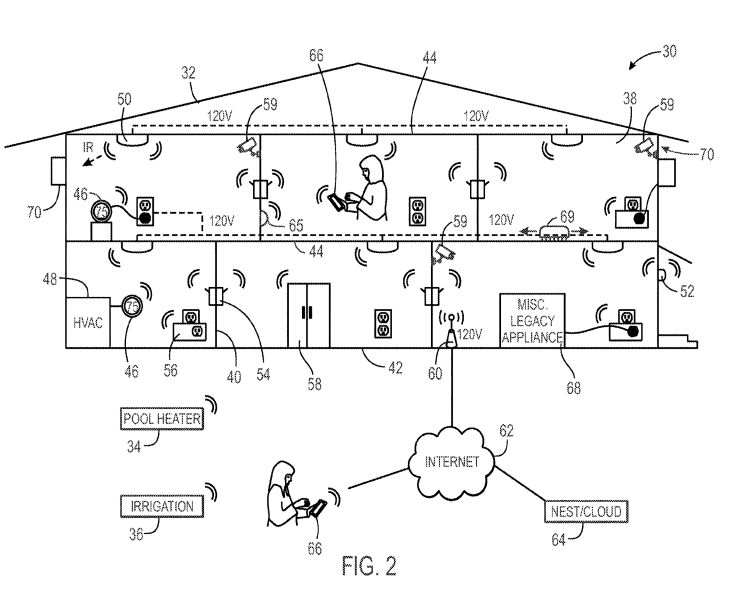Google wants to connect your lights, your fridge, your irrigation system, and more to help you get to work on time, exercise more — and maybe even yell less.
Google wants to take your smart home to the next level.
Since 2013, the tech giant has filed 125 patents related to the smart home, and over time, has acquired or released a slew of smart home devices — including the Nest thermostat.
But beyond automating everything from room temperature to entertainment systems, the company’s recently granted patent points to a more ambitious strategy for connecting homes in the future.
The patent envisions a reality where smart devices — along with the data they collect — help inform household decisions based on “sensed observations.”
Sensors, for example, would collect information about household member activity and their “goals” in order to suggest and implement policies. This might include turning off the TV when a child has been watching it for too long, or collectively using 5% less energy within the home.
While the patent aims to encourage more efficient use of smart devices, as well as more specific use, the system outlined in the patent could spark privacy, consent, and security concerns.
Below, we take a look at how this patent works and why it matters.
How the patent works
Google’s patent, filed in October 2018, aims to help households achieve “goals” by sensing, analyzing, and reporting on certain data collected by smart devices around the house. These goals could include eating fewer calories, spending more time outside, yelling less, or spending fewer hours on the internet.
Goals could be suggested by household members (ie parents setting restrictions for their kids) or by computing devices (based on household member interactions with smart devices).
The patent describes a “household policy manager,” which connects to sensors across the house, including — but not limited to — smart thermostats, smart plugs, connected refrigerators, TVs, washer/dryers, lights, alarm systems, stereos, pool heaters, irrigation systems, and cameras.
The manager, which acts like a central monitoring system, connects to all of these sensors and uses them to assess who is in the room, what they are doing, how they might be feeling, and how it relates to their pre-determined goals.
One example describes the manager’s ability to “dynamically adjust an alarm clock … based upon traffic delays, etc.” to help a household member achieve the goal of getting to work everyday by a certain time (say 8AM).......MUCH MORE
As with so much in life, just because you can doesn't mean you should.
